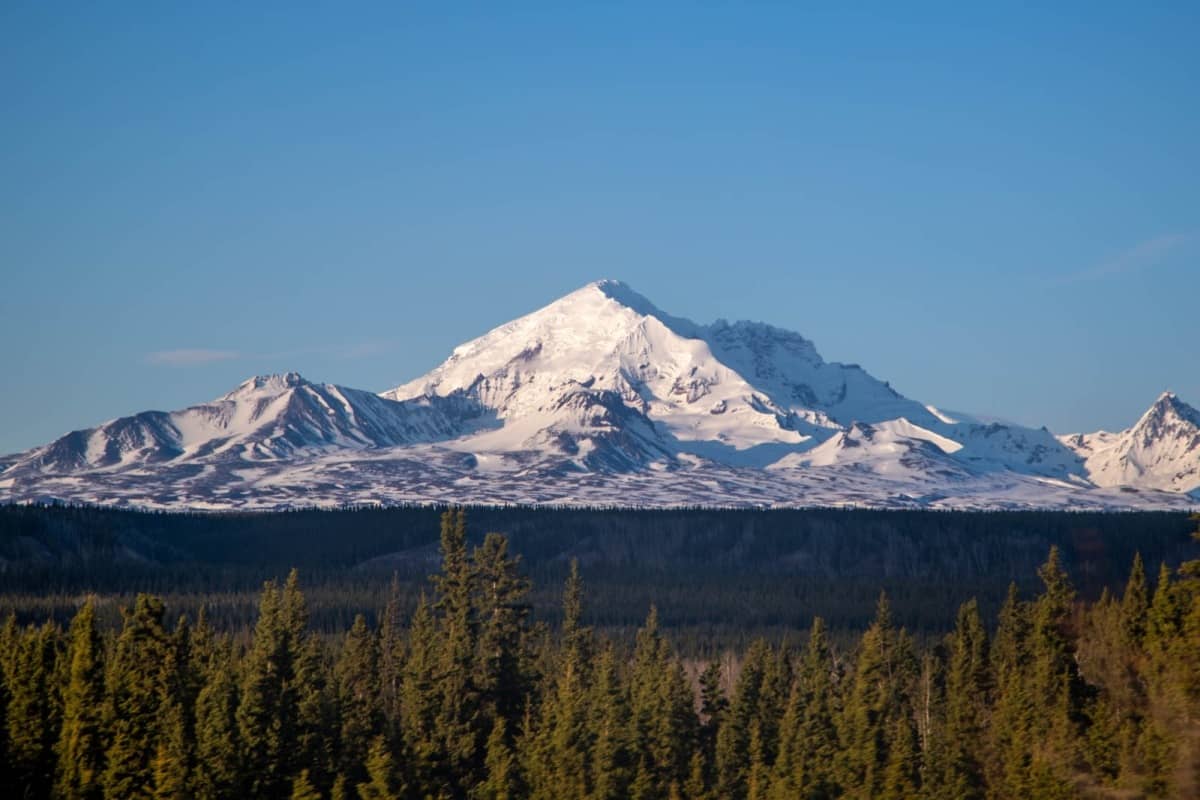Mount Drum, a striking peak in the Wrangell Mountains of Alaska, rises to a formidable height of 12,010 feet. Although it’s not the tallest in the region, its prominent stature and dramatic rise above the surrounding landscape make it a magnetic destination for climbers and adventurers. However, despite its allure, Mount Drum harbors several hidden dangers that can catch even experienced mountaineers off guard. Below are six significant risks that hikers and climbers should be prepared for before venturing into this challenging environment.
1. Harsh Winds on “Hurricane Ridge”
One of the most notorious challenges climbers face on Mount Drum is the ferocious winds on its southwest ridge, known colloquially as “Hurricane Ridge.” These winds can whip across the mountain at breakneck speeds, particularly because of Mount Drum’s isolated position. Sitting apart from the main range, it is exposed to gusts from multiple directions without natural barriers for protection. These winds can destabilize climbers, especially when they’re traversing narrow ridges or snow-laden slopes, increasing the risk of accidents.
One climbing group, while attempting an ascent, found themselves hunkered down in their tent for more than 24 hours due to extreme wind conditions. Winds on Hurricane Ridge are a constant and unpredictable threat, often forcing climbers to wait out the storm or even turn back.
2. Rapid and Unpredictable Weather Changes
The weather on Mount Drum is notoriously capricious. Climbers report experiencing bright, clear skies one moment, followed by sudden snow squalls that reduce visibility to near zero. Such abrupt weather changes are not only disorienting but can also trap climbers in treacherous conditions. Snowstorms and blizzards can descend quickly, creating whiteout conditions that obscure the path and make navigation nearly impossible.
These rapid shifts in weather make Mount Drum a particularly dangerous climb for those unprepared for the variability of Alaskan mountain climates. Climbers must be equipped with the proper gear and knowledge to withstand extended periods in extreme conditions, including cold weather camping and storm survival.
3. Corniced Ridges and Snow Overhangs
The ridges of Mount Drum, particularly near the summit, are fraught with hidden dangers, such as cornices—overhanging snow formations that are deceptively fragile. These cornices often form along the ridgelines and can break off without warning, causing climbers to fall into crevasses or down the mountain’s steep slopes.
Navigating these corniced ridges requires skill and caution. Climbers must constantly assess the stability of the snow beneath their feet, as a false step could lead to a deadly fall. This was a challenge faced by a team on the southwest ridge, where the combination of wind and snow created precarious conditions as they moved toward the summit. They reported having to straddle narrow sections of the ridge, using ice axes and crampons to stay balanced on the razor-sharp edge of the snow-covered ridge.
4. Isolation and Remoteness
Mount Drum’s remoteness is both a draw and a danger. Situated deep in Alaska’s wilderness, Mount Drum is far from the amenities and rescue services typically available in more accessible climbing locations. The nearest city, Glennallen, is several hours away, and reaching the mountain itself often requires a bush plane to land in the vicinity. For those venturing into its peaks, this means any accidents or emergencies can lead to long delays in rescue operations.
The isolation also magnifies the psychological strain of climbing Mount Drum. With few visitors and limited communication options, climbers may face extended periods of solitude, which can heighten the risks of disorientation and panic during emergencies. It’s crucial for climbers to bring satellite phones or other means of communication, as mobile reception is unreliable at best.
5. Avalanches and Snowpack Instability
Given its high elevation and snow-covered slopes, Mount Drum is highly susceptible to avalanches, particularly in the spring and early summer when snowmelt increases instability. Climbers on the southwest ridge, where avalanche risk is particularly high, must be vigilant and carry the appropriate gear, including avalanche beacons, shovels, and probes.
Even experienced climbers have reported near-miss encounters with avalanches while navigating the steep ridges of Mount Drum. The mountain’s unique topography, combined with unpredictable weather, creates perfect conditions for avalanches, which can occur without warning.
6. Glacial Crevasses and Hidden Traps
Mount Drum’s proximity to several glaciers, such as the Klawasi Glacier, introduces another level of danger: hidden crevasses. These deep cracks in the ice are often concealed beneath thin layers of snow, making them nearly impossible to detect until it’s too late. A fall into a crevasse can be fatal, particularly in such a remote location where immediate rescue may not be possible.
Climbers are advised to rope up when traversing glacier fields and to be proficient in crevasse rescue techniques. Falling into a crevasse is not only a danger to the person who falls, but it also puts the entire climbing team at risk during rescue operations, which can be complex and dangerous in freezing temperatures and high winds.
Conclusion
Mount Drum is a majestic and challenging destination for experienced climbers and adventurers, offering breathtaking views of Alaska’s Wrangell Mountains and the surrounding wilderness. However, this beauty comes with substantial risks. The mountain’s extreme weather, isolation, and dangerous terrain require careful preparation and respect. Those who attempt to climb Mount Drum must be fully aware of the dangers it presents, from unpredictable weather and fierce winds to hidden crevasses and avalanche-prone slopes. With proper preparation and respect for the mountain’s many hazards, climbers can experience the awe-inspiring majesty of Mount Drum while minimizing the risks associated with its hidden dangers.






